How A DisneyNature Movie Is Written, Filmed And Edited ['Born In China' Interview]
DisneyNature has been continuing the tradition Walt Disney started many years ago of producing animal documentaries filled with story, excitement, adventure, and fun. Their latest release, Born in China, ventures into the wilds of China to capture intimate moments with a panda and her growing cub, a young golden monkey who feels displaced by his baby sister, and a mother snow leopard struggling to raise her two cubs.
Whenever I'm watching a DisneyNature film, I sit there wondering how they create these films. The subjects are not as predictable and are much harder to photograph than the subjects of a traditional documentary. Are the stories crafted before the filmmakers head out into the wilds? Or is a narrative constructed in the editing room?
Last month, I talked with Born in China producer Roy Conli to find out the answers to these questions. Conli also serves on the Walt Disney Animation Studios Story Trust and has also produced films ranging from Treasure Planet to Frozen to Big Hero 6. As you'd expect, the nature documentary process is fascinating. Did you know that it took them 90 days to even get the first shot of the cubs in this movie? We discuss that and more in our Born in China interview.
Born in China Interview: Roy Conli
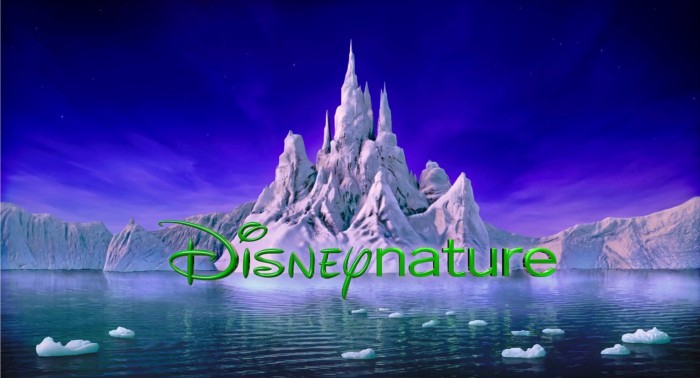 Peter Sciretta: I'm really interested to learn how these Disney nature films are made. Because it seems to me that this is a much different process than a normal documentary...Roy Conlu: Yeah, well it's interesting because this is the first one I've been involved with. And it's been a great journey. The idea on this was that we wanted to explore China as a region. And as opposed to the other films up to this point, we wanted to do multiple animals. And then so I think we follow all the kind of documentary rules of shooting in the sense that we do not interact with the actual unveiling or unreeling of nature. But we keep massive journals. The cinematographers, who are really the heroes of these films, keep massive journals of the behavior and the relationships that they're seeing. And then from that, we are able to kind of derive what the storyline is. So in a weird way, the animals give us the story.So when the idea of Born In China came up, did you guys narrow down the specific animals you wanted to feature?
Peter Sciretta: I'm really interested to learn how these Disney nature films are made. Because it seems to me that this is a much different process than a normal documentary...Roy Conlu: Yeah, well it's interesting because this is the first one I've been involved with. And it's been a great journey. The idea on this was that we wanted to explore China as a region. And as opposed to the other films up to this point, we wanted to do multiple animals. And then so I think we follow all the kind of documentary rules of shooting in the sense that we do not interact with the actual unveiling or unreeling of nature. But we keep massive journals. The cinematographers, who are really the heroes of these films, keep massive journals of the behavior and the relationships that they're seeing. And then from that, we are able to kind of derive what the storyline is. So in a weird way, the animals give us the story.So when the idea of Born In China came up, did you guys narrow down the specific animals you wanted to feature?
We actually sent multiple crews out. We looked at certain animals that didn't actually end up in the film.
Yeah, there's some stuff in the credits that seems to suggest some of the–
Yeah, absolutely. You see the credits. You'll see we followed some wolves. We followed the snow leopards. We actually had a crew filming elephants in Southern China. There's actually elephants that actually live in that area. But what happens is as these stories evolve, the film crews are getting footage to you with their journals. And we as a team are starting to craft a story and start culling through the massive amount of footage that comes in. And then these are filmed over a year and a half period over multiple visits.
And so the next time you get the next shipment of film in, that story may change, or it will open a new avenue that you kind of follow. I think an excellent example of that is Tao-Tao, the story of the monkey. 'Cause it originally as many of these films do, we were going to follow the sister, the baby and the mother. And follow kind of the first year and a half of a baby's life.
Our cinematographer Paul Stewart started being absolutely fascinated by Tao-Tao, the brother. And seeing how the brother was falling into the whole lost boy situation. Which from a natural history standpoint, is a regular activity within these tribes, these monkey tribes. But then he followed this monkey and was seeing that he kept on trying to come back to the family. And that became a much more compelling story than the sister.
And it also gave us an opportunity to expand the storytelling 'cause if you have two stories of kind of mother-daughter and mother-cub relationship and then that third story then became a brother-sister relationship that really ties into I think a huge, universal thematic. Who doesn't know a kid who is all of a sudden visited by a younger sibling and then pushed out and feeling somewhat on the side. So from a connection standpoint and from a kind of familial perspective, it was a great story that we could tell.
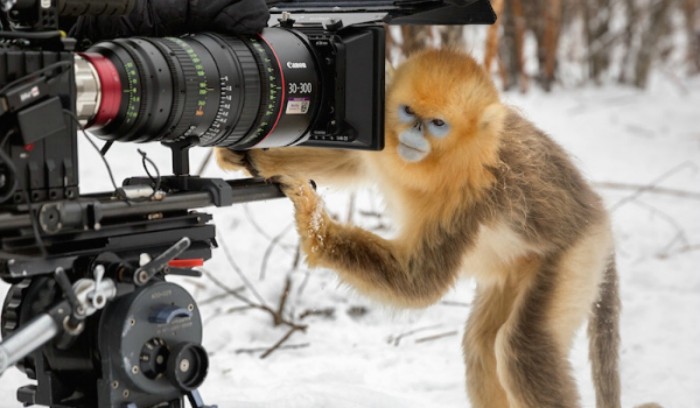 With documentaries, the filmmakers go in, they've narrowed down the subjects and they have an idea of the outline of what they're hoping is going to happen. But things change. Does that happen going into this? Do you have an idea of a story and then it evolves? Or is it just like "we're going to get the footage and we'll figure out the story as it happens"?
With documentaries, the filmmakers go in, they've narrowed down the subjects and they have an idea of the outline of what they're hoping is going to happen. But things change. Does that happen going into this? Do you have an idea of a story and then it evolves? Or is it just like "we're going to get the footage and we'll figure out the story as it happens"?
I think it evolves from the animals themselves. We certainly know behaviors are going in. It's interesting because I would refer to these as true life adventures as opposed to documentaries. Only in the sense that the narrative itself is a major component to what I think the mandate of DisneyNature is. We wanna educate. We want to inspire. And we want to entertain. And we feel that that entertainment element of it, that telling the story that is going to capture the heart, the imagination of both kids and adults is going to get people more aware of the natural world than if it's more clinical in a sense, you know?
Yeah.
But I would say that the story as we go into it, we know behaviors, we are aware of the relationships. But no one has ever filmed snow leopard cubs before. That's there's no film of snow leopard cubs. So it's kind of hard to tell a story until you actually get up there and get that on screen. When we found that we were able to track this family, it opened new doors to us. 'Cause we had an idea of snow leopard behavior, but we'd never actually seen this or it had never been documented before.
So Shane Moore came on as the cinematographer and has filmed big cats all over the world. He's actually from Wyoming. And he's done the Rockies, and he's done Africa, and he's done South America. But in China, the idea of doing a snow leopard was something that he jumped at because they are the most elusive cat in the world. Not only are they hard to track, but they're hard to see even if they're standing in front of you. And they blend right into the rock. So to him, the first goal that he had regarding filming them was to actually figure out their behavior, what their packs were, where they congregated, where their hunting trails were. And he does this by doing a series of what we call camera traps.
He had about two dozen cameras that record digital imagery in a very kind of low res feel and he glimpses those so that on a daily basis they can pick them up, go back and survey what may have walked by that particular location. When you hit something, you know you have it. And when he hit the cubs, and he saw that there were cubs in the area, he was overjoyed. Unfortunately, he didn't get a shot of those cubs until 90 days into his shoot.
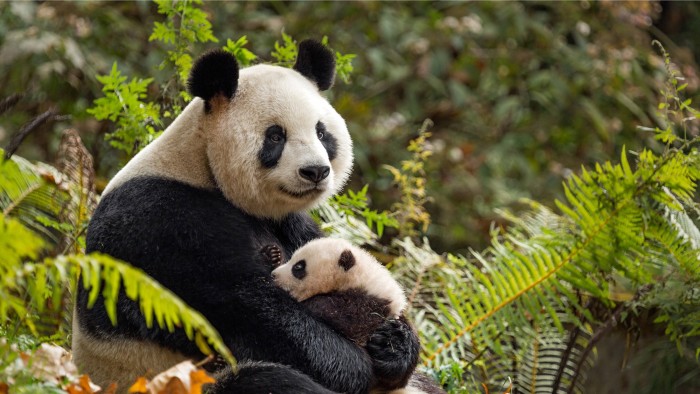 Wow. That's a long time to find your characters.
Wow. That's a long time to find your characters.
Yeah. Oh, it's this is mind boggling. And we're back in Los Angeles and in Bristol and in Beijing where we've got Phil Chapman and Brian Leith of Brian Leith Productions overseeing the cinematographers. And then Chuan is managing the whole editing process. We were having conversations whether we were on a fool's errand or not. And thank goodness Shane Moore urged us, he said, I've got this figured out. I know what's going on. And it was through persistence that we got this amazing footage. So we now have more footage of snow leopards and the only footage of snow leopard cubs that exists. And it's and out of that is where your story comes, because there was no way to tell that we were going to get actual cubs.
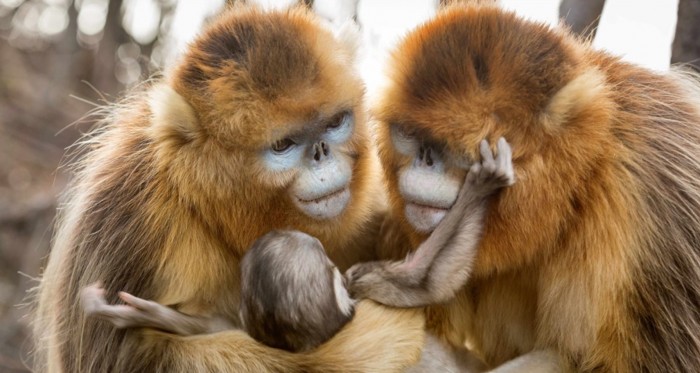 How much footage was filmed to create this movie?
How much footage was filmed to create this movie?
Overall for the 75-minute film, we have about 400 hours of footage.
That's a lot. I was wondering about the editing 'cause I kind of noticed in the climactic save at the end of in the monkey's story, it seemed like either you were trying to tell something that wasn't entirely captured there or there was some creative editing.
Yeah, the editing is basically combing through the footage that we have. And the shots were actually caught by our camera traps. We were able to get that footage in a very fortuitous way. That's the only way you can get setting up cameras would be very difficult to catch those things. But the [editing...there's] definitely a filmic hand at work here. Chuan is a narrative storyteller and that's where I say how we approach these is in a narrative way. But the behavior that you see and the actions that happen are true to life.
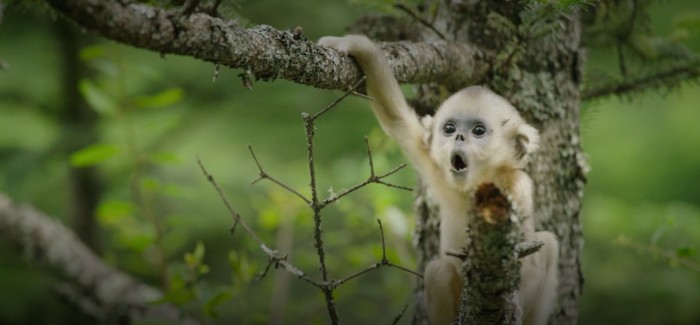 Is there any particularly advanced technology that was used on this film versus the previous DisneyNature films?
Is there any particularly advanced technology that was used on this film versus the previous DisneyNature films?
That's a good question. Indeed, we've used camera traps in the past, but, I mean, having that digital outlet, camera technology is changing by leaps and bounds. And each time you get out there you, we're toting another company's camera. The interesting thing that's happening now and something that we did for some of the promotion stuff of this those are some virtual reality cameras that are out right now. And we actually went in and got some panda footage on a virtual reality camera, which is kind of it's more novel than it is pertinent to what you are on screen. But technology is great.
But I'll tell you that no matter what technology you have, it's having the cinematographers whose lives has been focused on going out into the wild and filming these creatures and understanding [them]. Rolf Steinmann is the guy who did the chiru and he's the guy at the end of the movie who's trying to get those great camera lapse shots. He goes out and digs a three foot by three-foot hole and covers it in twigs and branches and whatever's around. And sits there with a camera for days in sub freezing temperatures waiting for those ideal shots.
Shane Moore, who's up on the...who's tracked cats all his life, knows that he needs to shoot from downwind not from upwind the cat. He came, and this is a great story. Shane is a really fascinating character. He was hiking one day and came up over an embankment and saw that he was literally maybe 10 meters from the mother. And had his camera, but backed off because he knew that he was not in the ideal position. And that the trust that he had built with the animal would be totally decimated if the animal were ever to catch him that close.
So same thing with Justin Maguire, who was the cinematographer on the panda shoots. They donned panda costumes and smeared themselves with panda scent we'll call it. And in order to disguise the fact that they were human. And were able from 20 meters to get that close to an 800-pound bear and it's cub. These guys are so good at what they do and they're so committed to what they do that it blows me away to this day.
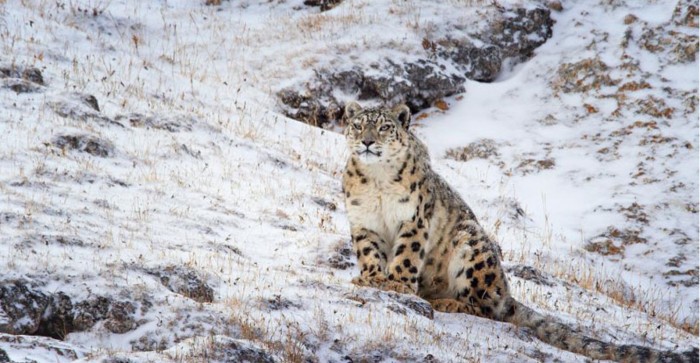 Well, I want to thank you very much. I think you've answered all of my questions. And I really like the film.
Well, I want to thank you very much. I think you've answered all of my questions. And I really like the film.
Oh thank you. And I'm as proud of this film as any film that I've produced. And I'm so, so excited about it. And I'm urging everyone to tell your readers to go see it the first weekend because I'm not sure if you're aware, but DisneyNature donates a portion of those first-week proceeds to conservation groups. They've done this now for all seven films that have come out. And this time, a portion of those first-week proceeds will be going to the World Wildlife Fund. And it will be going to snow leopards and pandas and survival of that species.
And the work that they've done in the past is so significant. When they did Chimpanzee, they were able to support 130 acres of new reserve land for chimpanzees. When they did African Cats, they were able to get 65 thousand acres of plain land in Kenya for reserve. There's 40 thousand acres of marine habitat that has been saved in the Bahamas. And that's three million trees planted in Brazil in the Amazon Forest. So get your readers to go out the first weekend because it's a damn good film and they're gonna do damn good if they go out.
I hope they do go out and I hope this does save a lot of pandas.
Excellent. Thank you so much.
